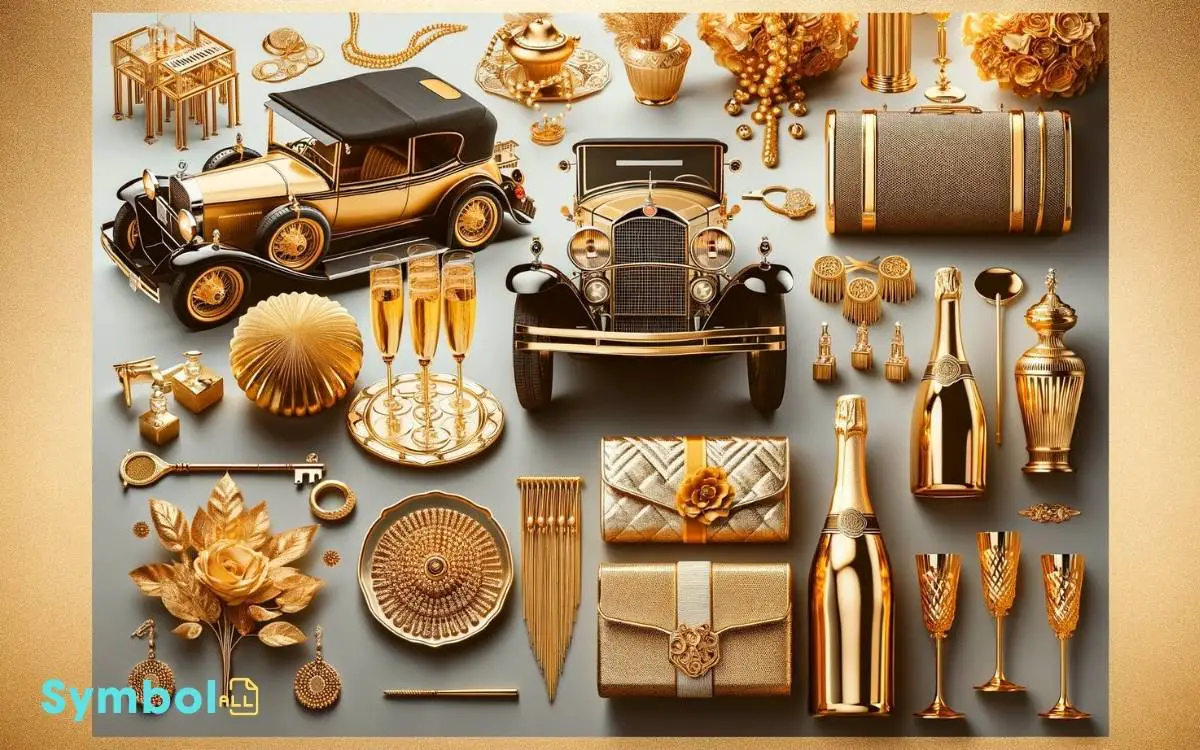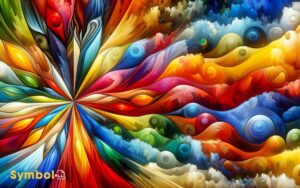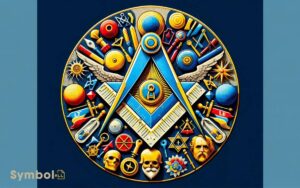What Does the Color Gold Symbolize in the Great Gatsby
In “The Great Gatsby,” gold isn’t just a color; it’s a symbol of the dazzling yet corrupt world of the 1920s. It represents both the allure and the moral decay of chasing after wealth and status.
For Jay Gatsby, gold epitomizes his dream of love and societal acceptance, tarnished by materialism.
Daisy Buchanan, as Gatsby’s golden girl, personifies the ultimate trophy, yet her shimmering facade masks a hollow core.
The relentless pursuit of a golden lifestyle leads characters into moral bankruptcy, revealing the era’s obsession with appearances.
Fitzgerald critiques this shimmering illusion, inviting you to reflect on the deeper meanings behind the golden facade.

Key Takeaway
The Allure of Wealth
In F. Scott Fitzgerald’s ‘The Great Gatsby,’ the allure of wealth acts as a powerful magnet, drawing characters into a world where opulence masks deeper societal and personal voids.
You’re invited to explore how Fitzgerald weaves gold not just as a hue of luxury but as a symbol of the decadence lurking beneath the glittering surface of the Roaring Twenties.
This fascination with wealth is more than an aesthetic choice; it’s a mirror reflecting the characters’ pursuit of the American Dream, tarnished by materialism. Fitzgerald critiques this obsession, suggesting it leads only to disillusionment.
In your journey through the novel, you’ll uncover how the pursuit of wealth serves as a façade, veiling the emptiness of the characters’ lives, hence offering a profound commentary on the era’s moral bankruptcy.
Gatsbys Golden Dream
At the core of The Great Gatsby, Jay Gatsby’s pursuit of wealth is emblematic of a golden dream, meticulously crafted yet ultimately elusive, revealing the complexity of his character and the era’s disillusionment with the American Dream.
You’ll notice that Gatsby’s aspiration isn’t merely for wealth in the tangible sense but for what it represents: status, respect, and the reclamation of a lost love.
His lavish parties, opulent mansion, and flamboyant lifestyle are all facets of this golden dream, a facade meant to attract, dazzle, and convince both himself and the world of his worthiness.
Yet, as you explore further, it becomes apparent that this glittering dream is corroded, tainted by the very society it seeks to emulate, illustrating the futility and decay beneath the surface of the Roaring Twenties’ glamour.
Daisy: A Golden Girl
Exploring further, it becomes evident that Daisy Buchanan embodies the very essence of Gatsby’s golden dream, serving as a symbol of both his greatest desires and his ultimate disillusionment.
Her character is intricately woven with gold, not just in her physical description but in the wealth and status she represents.
However, Daisy’s golden aura is misleading, reflecting not just allure but also the superficiality and corruption of her world.
- Daisy’s Illusory Nature: She appears golden, promising fulfillment, yet her reality is far from it.
- Gatsby’s Obsession: His pursuit of Daisy mirrors his chase for wealth and status.
- Symbol of Disillusionment: Daisy’s choices reveal the hollowness of Gatsby’s dreams.
- Contrast to True Value: Her golden exterior masks a lack of genuine warmth or depth, challenging the very idea of value and success.
Symbols of Opulence
Scott Fitzgerald masterfully employs symbols of opulence throughout ‘The Great Gatsby’ to critique the extravagance and moral decay of the 1920s American elite.
You’ll notice that gold not only permeates the narrative in literal forms such as Gatsby’s lavish parties and luxurious possessions but also metaphorically, representing the superficial allure of wealth.
This opulence, however, is portrayed with a critical eye. Fitzgerald uses these symbols to highlight the emptiness behind the era’s obsessive pursuit of wealth.
The golden objects and settings aren’t just signs of prosperity; they’re markers of a societal fixation on materialism that ultimately leads to moral bankruptcy.
Through this lens, Fitzgerald’s critique becomes clear: the glittering surface hides a corrupt core, making you question the true value of the era’s celebrated wealth.
Illusions of Grandeur
In ‘The Great Gatsby,’ Fitzgerald weaves a narrative that masterfully depicts illusions of grandeur as a mirage, compelling you to question the reality behind the glittering facades of wealth and success.
This portrayal prompts a deeper understanding of the era’s societal constructs and the personal delusions fostered by the American Dream.
Here’s how you can appreciate the intricacies of this theme:
- Recognize the disparity between characters’ perceived identities and their true selves.
- Examine Gatsby’s lavish parties as a smokescreen for his inner emptiness.
- Reflect on the symbolism of the color gold as a representation of faux opulence.
- Analyze the role of perception versus reality in the pursuit of happiness and fulfillment.
The Decay of Morality
As you explore the symbolism of gold in *The Great Gatsby*, you’ll find it’s not just a marker of wealth but also a harbinger of moral decline.
The luster of gold masks the corrupting influence of wealth, gradually eroding the characters’ ethical foundations.
This decay of morality, manifest in their actions and choices, serves as a critical lens through which to view the novel’s commentary on the American Dream.
Moral Decline Manifested
Through the lens of F. Scott Fitzgerald’s ‘The Great Gatsby,’ the glittering facade of wealth conceals a profound erosion of moral values, signifying the societal decay underneath the surface.
This decay manifests through various elements:
- Dishonesty and Deception: Characters weave lies and manipulate others, prioritizing self-interest over integrity.
- Infidelity: The rampant unfaithfulness among the characters undermines the sanctity of marriage and commitment.
- Recklessness: The heedless pursuit of pleasure leads to moral and physical ruin, showcasing a disregard for consequences.
- Materialism: The obsession with wealth and status eclipses traditional moral values, suggesting that material success is valued over ethical conduct.
These elements collectively depict a society where moral decline isn’t just present but celebrated, urging you to reflect on the costs of such decay.
Wealths Corrupting Influence
Delving into the depths of ‘The Great Gatsby,’ it becomes evident that wealth’s allure often masks a corrosive impact on moral integrity.
This decay of morality isn’t just a backdrop; it’s a critical narrative vein, pumping the story full of rich, complex discussions about the nature of human ethics when faced with opulence.
| Aspect | Description | Effect on Morality |
|---|---|---|
| Materialism | Pursuit of wealth over values | Erodes personal ethics |
| Social Status | Wealth as a measure of worth | Fosters superficial judgments |
| Desire for Power | Wealth used to control others | Leads to exploitation |
| Illusion of Happiness | Wealth equated with fulfillment | Masks true emotional state |
| Moral Compromise | Justifying unethical actions for gain | Deteriorates ethical standards |
In Fitzgerald’s narrative, gold symbolizes not just wealth, but the seductive promise of a golden life that, ultimately, reveals a hollow core where morality should reside.
Greed and Corruption
In exploring the symbolism of gold in ‘The Great Gatsby,’ you’ll uncover how greed and corruption seep into the fabric of the narrative.
Gatsby’s lavish parties serve as a beacon of his deep-seated desire for acceptance, reflecting a broader societal obsession with wealth.
Meanwhile, Daisy’s materialistic yearnings and the overarching moral decay paint a grim picture of the era’s ethical compromises.
Gatsbys Opulent Parties
Gatsby’s lavish parties serve as a vivid embodiment of the era’s greed and corruption, revealing the hollowness beneath the glittering facade of the Roaring Twenties.
These opulent gatherings aren’t merely social events; they’re a complex symbol of desire for recognition and the decay of moral values amid the pursuit of the American Dream. Fitzgerald uses them to critique the reckless indulgence and superficiality that defined the age.
- Extravagance as a Mask: The splendor conceals Gatsby’s longing and societal corruption.
- Ephemeral Guests: Reflect the transient, superficial relationships fostered by wealth.
- Contrast to Reality: The parties starkly contrast with the characters’ inner emptiness.
- Moral Decay: Symbolize the erosion of ethical values in the pursuit of materialism.
Daisys Material Desires
Why does Daisy Buchanan’s insatiable desire for wealth and luxury serve as a potent emblem of the era’s greed and moral corruption?
Your understanding deepens when you realize Daisy’s choices are not about love but about securing a position within the opulent upper class.
This reflects the broader societal obsession with materialism, suggesting that the American Dream is corrupted by the pursuit of material wealth.
| Aspect | Significance |
|---|---|
| Daisy’s Choices | Reflect societal values prioritizing wealth over genuine emotion |
| Gold | Symbolizes not just wealth, but the corruption it brings |
| Daisy & Gatsby | Their relationship mirrors the era’s superficiality and decay |
| Moral Corruption | Rooted in the prioritization of materialism over integrity |
| Societal Impact | Demonstrates the era’s deep-seated moral decay |
Daisy’s material desires aren’t just personal; they’re a vivid illustration of the era’s broader moral failings.
Moral Decay Displayed
Exploring Daisy Buchanan’s material desires reveals a deeper narrative of greed and corruption, marking the moral decay pervasive in the era depicted in The Great Gatsby.
- Greed’s Grip: Daisy’s yearning for wealth overshadows genuine emotions, illustrating how greed undermines moral integrity.
- Corruption’s Allure: The allure of wealth leads characters to morally questionable actions, reflecting society’s corruption.
- The Hollow Elite: The opulent lifestyle of the elite, symbolized by gold, masks their spiritual emptiness and moral decay.
- Gatsby’s Downfall: Gatsby’s pursuit of wealth, to win Daisy’s love, ultimately leads to his demise, underscoring the destructive power of greed and corruption.
This analysis shows you how Fitzgerald uses gold not just as a color, but as a symbol highlighting the era’s moral decay, driven by greed and corruption.
The American Dream Tarnished
In F. Scott Fitzgerald’s ‘The Great Gatsby,’ the allure of gold symbolizes the tarnished nature of the American Dream, revealing the corruption and moral decay beneath its glittering facade.
You observe through the characters’ pursuits of wealth and status, an underlying hollowness. This pursuit, once noble, now mirrors a desperate scramble for material gain, overshadowing the dream’s original ideals of freedom and opportunity.
The gold that once promised happiness and prosperity now serves as a stark reminder of the dream’s devolution into a mere quest for superficial appearances.
Through Fitzgerald’s nuanced use of gold, you’re invited to scrutinize the American Dream’s transformation, recognizing it as a deeply flawed pursuit, marred by greed and ethical compromise.
Gold Vs. Yellow: Subtle Differences
As you explore the nuanced distinction between gold and yellow in ‘The Great Gatsby,’ you’ll find that each color embodies contrasting symbolic meanings. Gold often represents wealth and purity, while yellow, its counterfeit, suggests deceit and decay.
This analysis will lead you to appreciate how color interpretations in context enrich our understanding of characters and themes.
Symbolic Meanings Compared
Delving into F. Scott Fitzgerald’s ‘The Great Gatsby,’ you’ll find that gold and yellow, though seemingly similar, carry distinct symbolic meanings that enhance the narrative’s complexity.
- Gold symbolizes wealth and status: It’s the color of luxury, representing the high societal status of characters like Gatsby and the old money aristocracy.
- Yellow, in contrast, signifies decay and corruption: Despite its initial brightness, it often highlights the moral decay hidden beneath the surface wealth.
- Gold reflects genuine value: It’s tied to the idea of true worth, both materially and morally.
- Yellow suggests falseness and deceit: This color is frequently associated with Gatsby’s car and other elements that represent the facade and the superficiality of the American Dream.
Color Interpretations in Context
Exploring the nuanced spectrum between gold and yellow in ‘The Great Gatsby‘ reveals Fitzgerald’s masterful use of color to distinguish the genuine from the superficial.
Gold, often associated with wealth and opulence, symbolizes the true, albeit elusive, qualities of the American Dream. It’s a representation of high ideals, success, and purity in its most coveted form. However, like the pursuit of the American Dream, gold’s allure often masks the challenges and complexities hidden beneath its gleaming surface. The gold color meaning and symbolism extend beyond mere material wealth, embodying ambition, resilience, and a constant striving for something greater. It reflects humanity’s eternal quest for perfection and the bittersweet reality of its pursuit.
Yellow, on the other hand, signifies the veneer of wealth, the garishness, and the moral decay beneath the glittering surface of the Jazz Age.
Fitzgerald carefully deploys these colors to craft a narrative landscape where characters’ true natures and intentions are subtly underscored by their association with these hues.
This distinction highlights the stark contrast between appearance and reality, a central theme in the novel.
Materialism and Despair
In ‘The Great Gatsby,’ Fitzgerald masterfully uses gold to represent not only the allure of wealth but also the underlying despair of materialism.
This duality invites you to explore deeper themes:
- The Hollow Pursuit: Gold symbolizes the characters’ relentless chase for wealth, which ultimately leads to a void of fulfillment.
- Decay of Morals: The pursuit of gold, or wealth, mirrors the decay of moral values, showcasing how materialism corrodes the soul.
- Unreachable Dreams: The gold motif highlights the unattainable nature of the American Dream for many, enveloping characters in despair.
- Isolation: Amidst material wealth, characters experience profound loneliness, suggesting that true connections can’t be forged with gold.
Through this lens, ‘The Great Gatsby’ critiques the American dream’s promise, revealing a landscape marred by materialism and despair.
The Facade of Prosperity
Fitzgerald paints a vivid picture of the Roaring Twenties‘ opulence, skillfully masking the era’s deep-seated economic and emotional fragility with a facade of prosperity.
Through the pervasive use of gold, he not only accentuates the era’s superficial glamour but also subtly critiques it.
You’re invited to explore beneath the surface, where the glitter isn’t gold but a mere gilded exterior.
This facade of prosperity, meticulously maintained by characters like Gatsby, reflects a profound societal yearning for recognition and success.
However, Fitzgerald doesn’t let you linger long on the illusion. He carefully peels away layers, revealing the hollowness beneath.
This juxtaposition serves as a powerful commentary on the American Dream, suggesting that what glitters may not always offer salvation or fulfillment.
The Color of Old Money
You’ll notice that in ‘The Great Gatsby,’ gold doesn’t just symbolize the opulence of the era; it serves as a marker of old money’s enduring status and power.
This color, emblematic of wealth’s traditional hue, subtly differentiates the aristocracy from those with newly acquired fortunes.
Through Fitzgerald’s careful use of gold, he crafts a visual code that speaks volumes about the social hierarchy of his time.
Wealths Traditional Hue
Gold, embodying opulence and the highest tier of social strata, serves as a critical symbol for old money in The Great Gatsby.
This hue, more than a mere color, is a narrative device that F. Scott Fitzgerald employs to explore themes of wealth, power, and decay.
Understanding its role enriches your reading experience:
- Gold as a Marker of Status: It distinguishes the established wealth of characters from newly acquired fortunes.
- Symbol of Permanence: Unlike the ephemeral nature of new money, gold represents enduring wealth.
- Cultural Connotation: It aligns with historical associations of gold with nobility and refinement.
- Psychological Impact: Gold’s presence influences characters’ behaviors and the dynamics of their relationships, hinting at underlying motivations and societal pressures.
Aristocracys Visual Code
Within the tapestry of The Great Gatsby, the nuanced shades of gold not only mark the landscape of wealth but also serve as the aristocracy’s visual code, subtly distinguishing old money from its brasher counterpart.
This distinction is pivotal, as it encapsulates the class divide intrinsic to the novel’s setting.
You’ll notice that Fitzgerald employs a more subdued, elegant shade of gold to denote the established wealth of characters like Tom and Daisy Buchanan, in contrast to the glaring, ostentatious gold associated with the nouveau riche, such as Gatsby himself.
This color symbolism underscores the characters’ legitimacy and pedigree or their lack thereof. It’s a visual shorthand for authenticity versus pretension, marking the boundaries of social acceptance within the era’s hierarchical society.
The Golden Afternoon
Exploring the ‘Golden Afternoon’ in The Great Gatsby reveals how Fitzgerald employs gold not just as a symbol of wealth but as a marker of ephemeral beauty and unattainable dreams.
This vivid imagery serves multiple functions:
- Emphasizes Transience: Gold’s fleeting glitter underscores the temporary nature of Gatsby’s world.
- Highlights Desire: It mirrors the characters’ yearning for a reality that’s just beyond their grasp.
- Illuminates Illusion: The golden hue masks the emptiness beneath the surface, suggesting deception.
- Foreshadows Decline: This brilliance hints at an inevitable dimming, preparing the reader for the story’s progression.
Fitzgerald’s nuanced use of gold, hence, enriches our understanding of the narrative’s themes, making the ‘Golden Afternoon’ a critical component of his symbolic landscape.
The Fading Golden Glow
As the narrative unfolds, the initially radiant golden imagery gradually loses its luster, reflecting the inevitable disillusionment that accompanies the pursuit of the American Dream in The Great Gatsby. This diminishing glow symbolizes the erosion of the characters’ dreams and ideals.
The gold that once signified wealth, success, and optimism now reveals its transience, mirroring the characters’ realization that material wealth can’t buy happiness or fulfill their deeper desires.
You’ll observe how Fitzgerald uses this fading gold to critique the hollowness of a society obsessed with wealth and status. It’s a poignant reminder that the glittering facade often masks a grim reality, urging you to question the true value and sustainability of such a pursuit.
Beyond the Glitter: A Conclusion
Peeling away the glittering surface of The Great Gatsby, we uncover a profound critique of the American Dream’s hollow core.
Fitzgerald’s use of gold not only embellishes characters and settings but also serves as a multifaceted symbol. It highlights the allure and ultimate disappointment of the pursuit of wealth, love, and social status.
To truly appreciate the depth of this analysis, consider:
- Gold represents not just wealth but the decay hidden beneath.
- The color’s allure mirrors society’s obsession with appearances.
- Fitzgerald critiques the unsustainable nature of the American Dream.
- The novel invites readers to reflect on their values and the pursuit of materialism.
Understanding gold’s symbolism in *The Great Gatsby* enriches your comprehension of this classic, revealing the nuanced layers of Fitzgerald’s critique.
Conclusion
Essentially, the golden hue that pervades ‘The Great Gatsby’ isn’t simply a confirmation of wealth; it’s a mirror reflecting the tarnished dreams beneath the glittering surface.
You’ve journeyed through Gatsby’s gilded aspirations, Daisy’s aureate allure, and the symbols of affluence that dot this narrative landscape.
Yet, as you peel away the layers, it becomes evident that this luster is but a facade, masking the hollowness at the heart of the American Dream—an allegory that resonates profoundly, even today.






